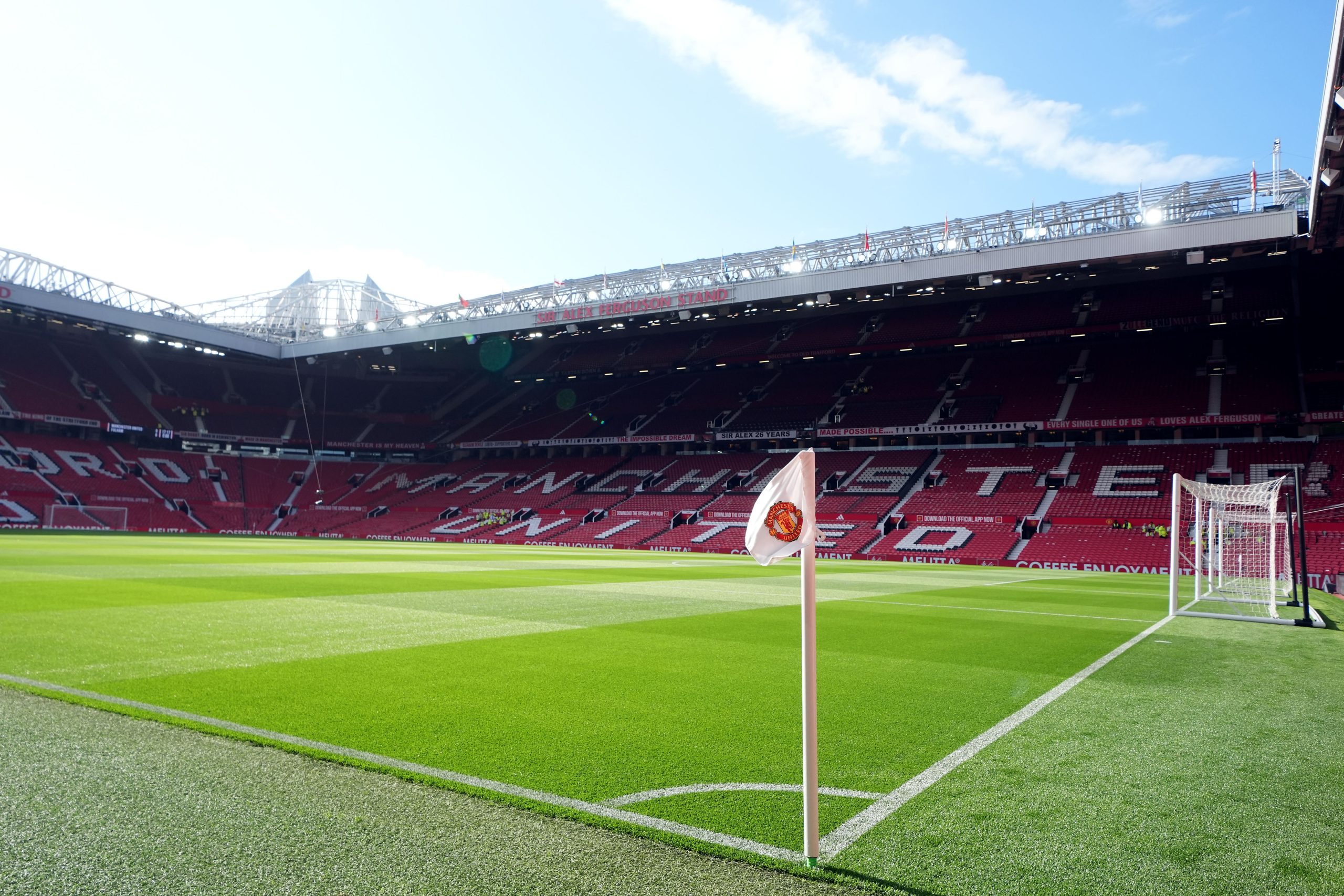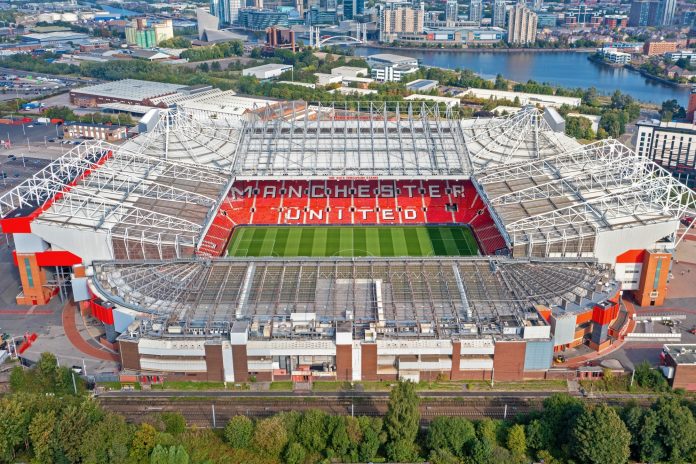Manchester United Set to Demolish Old Trafford as Plans for £2 Billion New Stadium Progress
Manchester United is reportedly preparing for a monumental shift regarding the future of its iconic home, Old Trafford. The legendary stadium, which has been the backdrop for countless historic moments, may soon be demolished to make way for a new state-of-the-art £2 billion stadium. This decision represents a significant change from earlier proposals, which included keeping a scaled-down version of Old Trafford intact for women’s and academy matches. However, escalating costs and logistical challenges have prompted the club to consider a complete redevelopment. Sir Jim Ratcliffe’s ambitious vision for a “Wembley of the North” is taking center stage, with plans for a new modern venue that will preserve elements of the club’s rich heritage.
The Shift in Manchester United’s Stadium Plans
Old Trafford has been Manchester United’s home for over a century, earning its nickname as the “Theatre of Dreams.” Initially, there were discussions about scaling down the existing stadium if a new venue was built. The scaled-down Old Trafford would have been used for Manchester United’s women’s and academy teams, with a proposed capacity of 30,000 seats. However, recent developments suggest that these plans are no longer viable.
Sources within the club indicate that keeping a smaller version of Old Trafford is now considered too costly and logistically complex. The challenges of maintaining two stadiums, combined with the high costs associated with upgrading Old Trafford, have led to discussions about a complete demolition of the stadium. Instead, the club is focused on creating a new modern facility, designed to cater to the needs of a top-tier football club in the 21st century.
Sir Jim Ratcliffe’s Ambitious Vision
Sir Jim Ratcliffe, a lifelong Manchester United fan and CEO of chemical giant Ineos, has played a significant role in shaping the future of Old Trafford. After acquiring a stake in the club, Ratcliffe established the Old Trafford Regeneration Task Force in February 2024. The task force, which includes notable figures such as Lord Coe and former Manchester United captain Gary Neville, is leading the redevelopment project.
Ratcliffe’s vision for the new stadium has been dubbed the “Wembley of the North.” The proposed 100,000-seater stadium is set to be a state-of-the-art venue, capable of hosting major domestic and international events. The aim is to build a stadium that not only serves as the home of Manchester United but also reflects the club’s storied history and its importance to the global footballing community.

Despite the potential demolition of Old Trafford, Ratcliffe has assured fans that key historical elements of the original stadium will be preserved. These include iconic features such as the Munich Memorial, the statue of Sir Alex Ferguson, and the Munich Tunnel. Ratcliffe and his team are working closely with heritage groups to ensure that these important symbols of Manchester United’s past are integrated into the design of the new stadium.
The Financial and Logistical Challenges
The decision to demolish Old Trafford and build a new stadium comes down to a mix of financial and logistical considerations. Maintaining two stadiums—Old Trafford for academy and women’s matches, and a new stadium for the men’s team—proved to be an expensive proposition. A smaller Old Trafford, with a capacity of 30,000 seats, was deemed impractical and excessive for women’s and academy matches.
Moreover, upgrading the current Old Trafford has been a long-standing challenge. The stadium, despite its grandeur, has faced numerous issues, including outdated infrastructure and facilities that no longer meet modern football standards. Previous upgrades were piecemeal, and significant investments would be required to bring the stadium up to par with other elite European clubs.
A new stadium would not only offer Manchester United fans a modern and improved matchday experience but also provide the club with a venue that could host a wider variety of events. This includes not only football matches but also concerts and other large-scale events, generating more revenue for the club.

Fan Reactions and Historical Preservation
The news of Old Trafford’s potential demolition has sparked mixed reactions among Manchester United supporters. For many, Old Trafford is more than just a stadium—it is a symbol of the club’s legacy, its triumphs, and its challenges. The idea of demolishing such a revered ground has left some fans feeling uneasy, even if the plans include preserving key historical elements.
To address these concerns, Manchester United has taken steps to engage with the fanbase. The club announced that it would be conducting surveys with season ticket holders and other key stakeholders to gauge their opinions on the redevelopment plans. A heritage focus group is also being set up to ensure that the club’s historical elements are carefully preserved in the new design.
Gary Neville, a vocal proponent of the project, has emphasized that preserving Old Trafford’s legacy is a top priority. In a recent interview, he highlighted that many of Old Trafford’s current structures have been built over the last few decades, with few remnants of the original 100-year-old stadium left. “What we must keep are the statues, the Munich clock, and the tunnel,” Neville stated, underscoring that these symbols will remain an integral part of Manchester United’s new home.
The Impact of a New Stadium
The construction of a new stadium is poised to have a far-reaching impact on Manchester United and its surrounding community. A 100,000-seater stadium would cement United’s status as one of the largest clubs in the world, both in terms of fanbase and infrastructure. The new venue would also boost Manchester’s economy by attracting visitors for events beyond football, enhancing the city’s reputation as a hub for major sports and entertainment events.

From a financial perspective, the new stadium would generate substantial revenue for Manchester United, both from increased matchday capacities and through hosting concerts, conferences, and other high-profile events. The modern facilities would also enhance the fan experience, with better seating, amenities, and overall comfort.
However, this redevelopment comes at a high price. The £2 billion estimated cost will likely be financed through a combination of club funds, external investments, and possibly loans. This is a major commitment for Manchester United, but the long-term benefits are expected to far outweigh the initial costs.
Conclusion
Manchester United’s decision to move forward with the demolition of Old Trafford and the construction of a new £2 billion mega stadium marks a new chapter in the club’s storied history. While the plan to demolish such an iconic ground may be bittersweet for many fans, the new “Wembley of the North” promises to elevate the club’s status on the global stage.
With Sir Jim Ratcliffe leading the charge, the club is focused on creating a world-class stadium that preserves Manchester United’s rich heritage while providing a cutting-edge venue for modern football. The future of Old Trafford may soon change, but the spirit of Manchester United remains steadfast as the club embarks on this ambitious journey.


